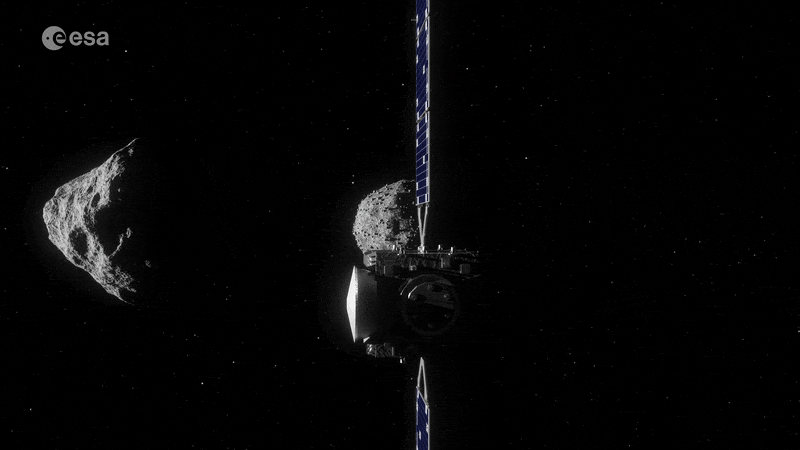Accept all cookies Accept only essential cookies See our Cookie Notice

About ESA
The European Space Agency (ESA) is Europe’s gateway to space. Its mission is to shape the development of Europe’s space capability and ensure that investment in space continues to deliver benefits to the citizens of Europe and the world.
Highlights
ESA - United space in Europe
This is ESA ESA facts Member States & Cooperating States Funding Director General Top management For Member State Delegations European vision European Space Policy ESA & EU Space Councils Responsibility & Sustainability Annual Report Calendar of meetings Corporate newsEstablishments & sites
ESA Headquarters ESA ESTEC ESA ESOC ESA ESRIN ESA EAC ESA ESAC Europe's Spaceport ESA ESEC ESA ECSAT Brussels Office Washington OfficeWorking with ESA
Business with ESA ESA Commercialisation Gateway Law at ESA Careers Cyber resilience at ESA IT at ESA Newsroom Partnerships Merchandising Licence Education Open Space Innovation Platform Integrity and Reporting Administrative Tribunal Health and SafetyMore about ESA
History ESA Historical Archives Exhibitions Publications Art & Culture ESA Merchandise Kids Diversity ESA Brand Centre ESA ChampionsLatest
Space in Member States
Find out more about space activities in our 23 Member States, and understand how ESA works together with their national agencies, institutions and organisations.
Science & Exploration
Exploring our Solar System and unlocking the secrets of the Universe
Go to topicAstronauts
Missions
Juice Euclid Webb Solar Orbiter BepiColombo Gaia ExoMars Cheops Exoplanet missions More missionsActivities
International Space Station Orion service module Gateway Concordia Caves & Pangaea BenefitsLatest
Space Safety
Protecting life and infrastructure on Earth and in orbit
Go to topicAsteroids
Asteroids and Planetary Defence Asteroid danger explained Flyeye telescope: asteroid detection Hera mission: asteroid deflection Near-Earth Object Coordination CentreSpace junk
About space debris Space debris by the numbers Space Environment Report In space refuelling, refurbishing and removingSafety from space
Clean Space ecodesign Zero Debris Technologies Space for Earth Supporting Sustainable DevelopmentApplications
Using space to benefit citizens and meet future challenges on Earth
Go to topicObserving the Earth
Observing the Earth Future EO Copernicus Meteorology Space for our climate Satellite missionsCommercialisation
ESA Commercialisation Gateway Open Space Innovation Platform Business Incubation ESA Space SolutionsLatest
Enabling & Support
Making space accessible and developing the technologies for the future
Go to topicBuilding missions
Space Engineering and Technology Test centre Laboratories Concurrent Design Facility Preparing for the future Shaping the Future Discovery and Preparation Advanced Concepts TeamSpace transportation
Space Transportation Ariane Vega Space Rider Future space transportation Boost! Europe's Spaceport Launches from Europe's Spaceport from 2012Latest

Hera asteroid mission here
Thank you for liking
You have already liked this page, you can only like it once!
The moment ESA’s Hera asteroid mission for planetary defence arrived at the largest satellite test site in Europe – the ESTEC Test Centre in Noordwijk, the Netherlands.
The van-sized spacecraft was driven overnight from its ‘birthplace’ at OHB in Bremen, Germany cocooned inside this environmentally controlled container.
The container was lifted from its transport lorry then left in the airlock of the Test Centre overnight to allow dust to settle and internal and external humidity to equalise before it could be taken into the cleanroom area and taken out safely.
“This is an emotional moment for our team, because it has taken three years of hard work to reach this point,” explains Hera lead system engineer Paolo Martino.
“This is an extremely short timespan to have a complete deep space mission ready for testing, but we did it – now the next step is to fully check its fitness for spaceflight for its launch in October 2024.”
Hera is Europe’s contribution to an international planetary defence experiment. Last year the NASA DART mission impacted with the Dimorphos asteroid in deep space – modifying its orbit and sending a plume of debris thousands of kilometres out into space.
Next Hera will return to Dimorphos to perform a close-up survey of the crater left by DART. The mission will also measure Dimorphos’ mass and make-up, along with that of the larger Didymos asteroid that Dimorphos orbits around. This extra data will help turn this grand-scale impact experiment into a well-understood technique that could be repeated if ever needed to safeguard Earth.
Operated for ESA by European Test Services, the ESTEC Test Centre is the largest facility of its kind in Europe, providing a complete suite of equipment for all aspects of satellite testing under a single roof. You can visit ESTEC during this year’s ESA Open Day in the Netherlands, taking place on the first weekend of October.
-
CREDIT
ESA-I Carnelli -
LICENCE
ESA Standard Licence

Hera scans Dimorphos

Hera team's visit by families

Hera asteroid mission, shaken not stirred

Hera approaching Didymos asteroids















 Germany
Germany
 Austria
Austria
 Belgium
Belgium
 Denmark
Denmark
 Spain
Spain
 Estonia
Estonia
 Finland
Finland
 France
France
 Greece
Greece
 Hungary
Hungary
 Ireland
Ireland
 Italy
Italy
 Luxembourg
Luxembourg
 Norway
Norway
 The Netherlands
The Netherlands
 Poland
Poland
 Portugal
Portugal
 Czechia
Czechia
 Romania
Romania
 United Kingdom
United Kingdom
 Slovenia
Slovenia
 Sweden
Sweden
 Switzerland
Switzerland

























